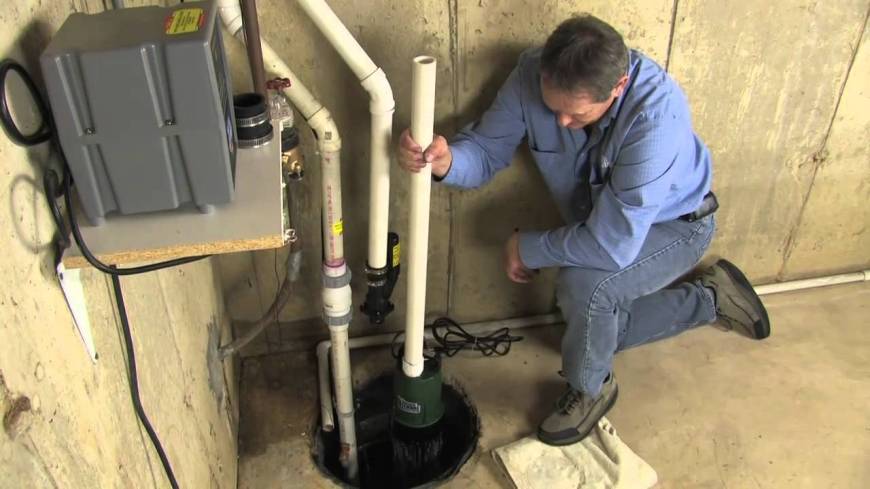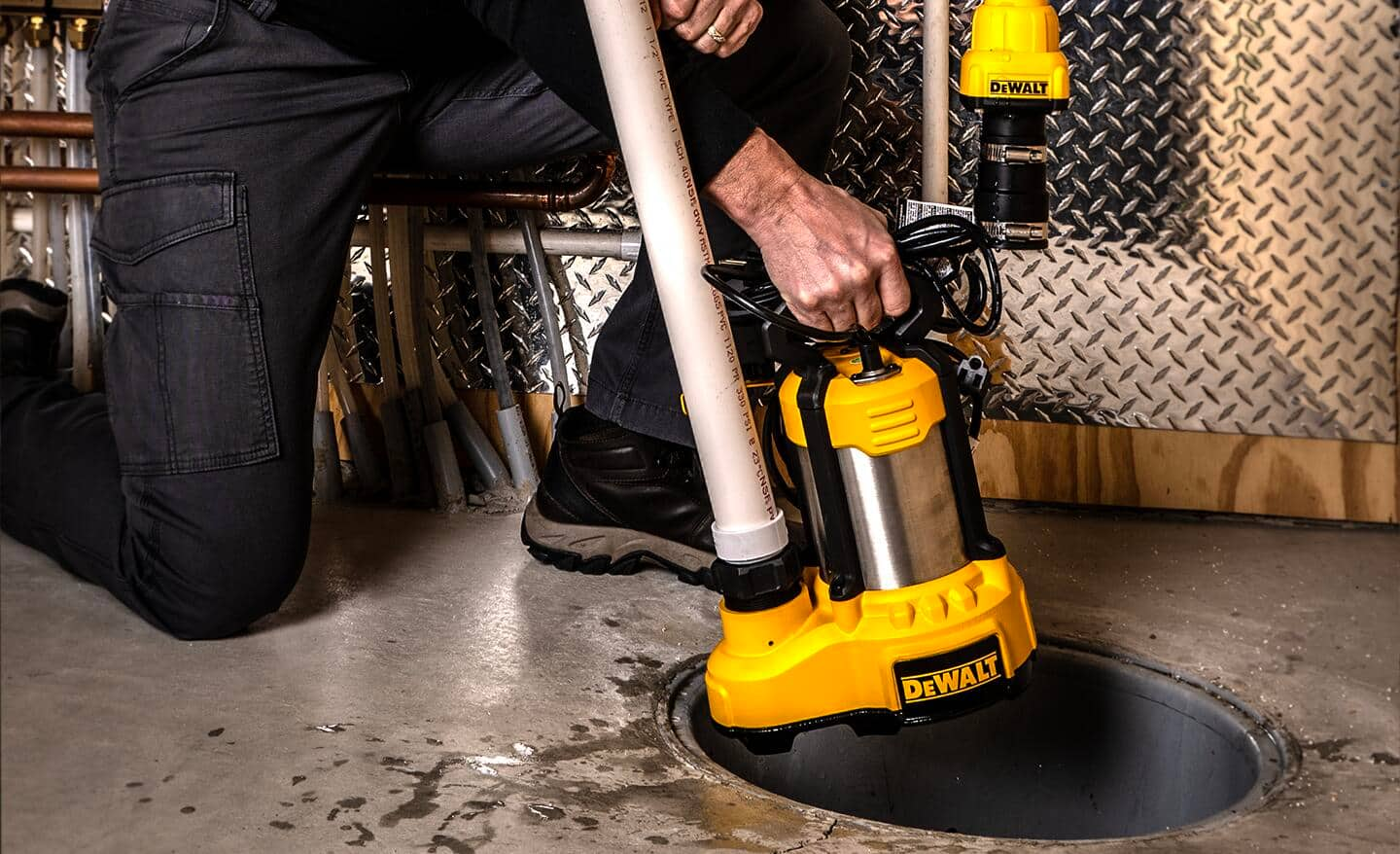Easy-to-Follow Tips for Maintaining Your Sump Pump
Easy-to-Follow Tips for Maintaining Your Sump Pump
Blog Article
The writer is making several great points regarding Steps to Cleaning Your Sump Pump Properly overall in the content in the next paragraphs.

Sump pumps are critical components in several homes, especially in areas vulnerable to flooding or excessive dampness. They help stop water damage by effectively eliminating excess water from basements or crawl spaces. However, like any other device, sump pumps need normal upkeep to ensure they operate efficiently when required the most. Cleansing your sump pump is a crucial part of its maintenance, and comprehending exactly how to do it correctly can save you from expensive repairs and potential disasters.
Intro
Keeping a clean sump pump is essential for its proper performance and long life. Ignoring this crucial job can bring about obstructions, breakdowns, and inevitably, water damage to your building. Therefore, finding out exactly how to clean a sump pump is vital for house owners that depend on these devices to keep their cellars completely dry and protected.
Indications of a Dirty Sump Pump
Recognizing when your sump pump requires cleansing is important for stopping potential malfunctions. Some common indications that suggest a filthy sump pump consist of strange sounds during operation, reduced water flow, and noticeable debris in the pit. If you discover any one of these signs, it's vital to cleanse your sump pump quickly to prevent any further problems.
Preparing for Cleaning
Before you start cleansing your sump pump, it's necessary to take some safety and security precautions. Beginning by turning off the power to the pump to prevent any electric accidents. Additionally, use appropriate protective equipment, such as handwear covers and safety glasses, to shield on your own from dust, debris, and prospective virus.
Understanding the Sump Pump
Before diving into the cleansing process, it's important to have a basic understanding of exactly how a sump pump works. Commonly mounted in a pit or container below the basement flooring, a sump pump includes a number of key elements, including a pump, a float button, and a discharge pipeline. When water accumulates in the pit, the float button activates the pump, which after that pumps the water out through the discharge pipe, away from the structure's structure.
Step-by-step Guide to Cleaning a Sump Pump
Turning off the Power
Begin by disconnecting the power supply to the sump pump to avoid any kind of mishaps while cleansing.
Looking For Proper Functioning
Before re-installing the pump, do a fast test to make certain that the float button turns on the pump properly. Pour some water right into the sump pit and observe the pump's procedure. If everything is working appropriately, you can rebuild the pump and reconnect the power supply.
Eliminating Particles and Dust
Make use of a bucket or a scoop to remove any type of visible particles, dust, or sediment from the sump pit. Dispose of the particles properly to stop it from blocking the pump or the discharge pipeline.
Cleaning up the Pump and Drift Switch
As soon as the pit is clear of debris, thoroughly get rid of the pump from the pit. Examine the pump and the float switch for any kind of signs of damage or wear. Utilize a soft brush or towel to clean the surfaces and remove any type of gathered grime.
Purging the System
After cleaning the pump and float button, flush the sump pit with tidy water to remove any kind of continuing to be dust or sediment. This will certainly assist ensure that the pump runs efficiently and successfully.
Upkeep Tips to Keep Your Sump Pump Clean
Along with routine cleansing, there are numerous upkeep ideas you can comply with to keep your sump pump in optimum problem:
Final thought
Cleaning your sump pump is an important aspect of its maintenance and makes sure that it runs properly when you require it one of the most. By following the actions outlined in this guide and integrating regular upkeep into your routine, you can extend the life-span of your sump pump and secure your home from water damage.
6 STEPS ON HOW TO CLEAN A SUMP PUMP PROPERLY
UNDERSTANDING SUMP PUMPS
Your sump pump plays a crucial role in protecting your home by managing and removing excess water. It primarily functions as a “shield”, guarding your basement against the damaging effects of water accumulation. The pump is housed in a sump pit in the lowest part of your basement, and its job is to pump out any water that collects there.
During heavy rainfalls or when snow melts rapidly, water can infiltrate your basement, posing potential risks like flooding, structural damage, and harmful mold growth. Here, the sump pump springs into action, pumping out the intruding water and directing it away from your home.
SAFETY FIRST
Before cleaning, remember to prioritize safety. Disconnect the sump pump from the power source to prevent any accidental electric shocks. Also, wear sturdy gloves to protect your hands from any sharp or dirty components within the pump.
REMOVE THE SUMP PUMP
After ensuring your safety, the next step is to remove the sump pump from its pit. Doing this might require careful maneuvering as you don’t want to damage any pump components. Once removed, clean the sump pit to remove any accumulated debris or sludge.
INSPECT THE PUMP
Inspect the pump for any visible signs of wear or damage. Check the power cord, float switch, and impeller housing. If any components look worn out or damaged, consider replacing them to ensure optimal performance.
CLEAN THE PUMP
Thoroughly clean the pump with warm, soapy water. Make sure to rid it of any dirt, gravel, or other debris that might impede its performance. You can use a toothbrush to clean the small, hard-to-reach parts of the pump.
REINSTALL THE SUMP PUMP
Reinstall the pump into the sump pit Make sure it’s positioned correctly to remove the water effectively Once it’s back in place, reconnect it to the power source TEST THE PUMP
Finally, pour some water into the pit to ensure the pump works correctly. It should start automatically and begin pumping out the water; if it doesn’t, check the power source and the positioning of the pump.
Remember, while cleaning your sump pump is an essential part of home maintenance, hiring a professional plumber for a thorough inspection and cleaning at least once a year is also important. This will ensure that your pump is in optimal condition, ready to protect your home from potential water damage.
BEST PRACTICES FOR CLEANING SUMP PUMP DISCHARGE PIPES
Regular Inspection: Regularly inspect your discharge pipes, especially during heavy rainfall or snowmelt periods. Look for any signs of blockage or damage. Early detection of problems can prevent serious issues down the line. Periodic Cleaning: Over time, sediment and debris can accumulate in the discharge pipes, impeding the flow of water. Regular cleaning helps keep the pipes clear and functioning efficiently. You can use a high-pressure water jet to effectively clean the pipes. Insulation During Winter: In colder climates, discharge pipes can freeze, blocking the outflow of water. Protect your discharge pipes from freezing temperatures by insulating them with foam pipe insulation. This will ensure the sump pump can continue to discharge water even in freezing conditions. Proper Positioning: The discharge pipe should be positioned to direct water away from your home’s foundation. Improper positioning can lead to water seeping back into the basement. Ensure the pipe is long enough and angled correctly. Installation of a Check Valve: A check valve prevents water from flowing back into your sump pit after the pump has pushed it out. Installing a check valve helps maintain the efficiency of your sump pump and reduces the risk of flooding. Minimize Pipe Turns: Every curve or turn in the discharge pipe can decrease the efficiency of water flow. By minimizing turns and bends in your discharge pipe, you can increase the efficiency of your sump pump. https://www.fullspeedplumbing.com/how-to-clean-a-sump-pump-properly9999/

Do you enjoy reading about Steps to Cleaning Your Sump Pump Properly? Write a comment down below. We would be delighted to listen to your insights about this write-up. Hoping to see you back again in the near future. Sharing is caring. Helping others is fun. I thank you for reading our article about How To Effectively Clean A Sump Pump.
Get A Free Quote Report this page